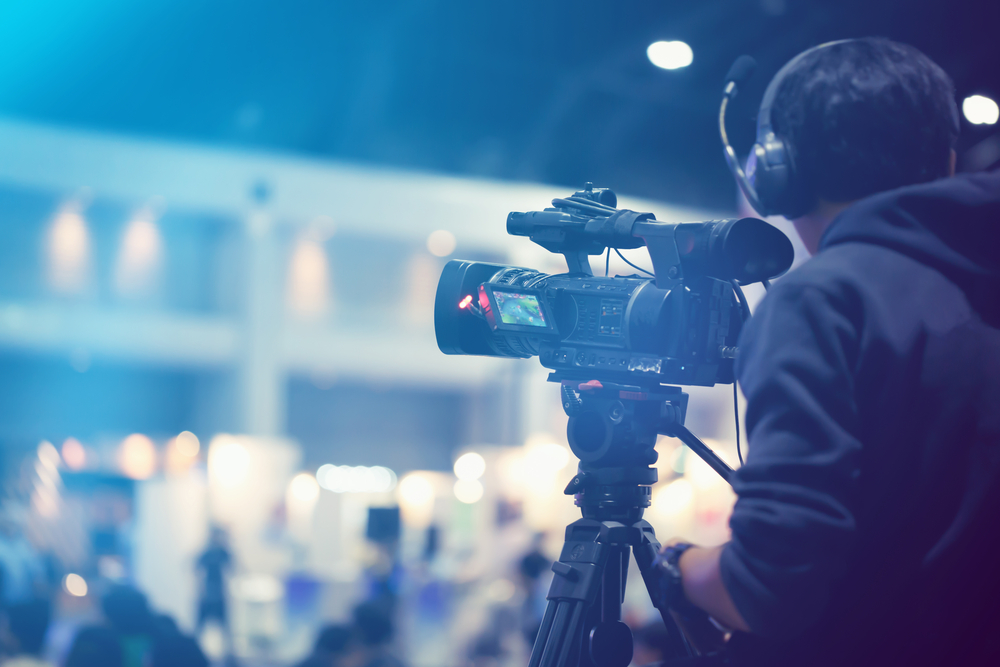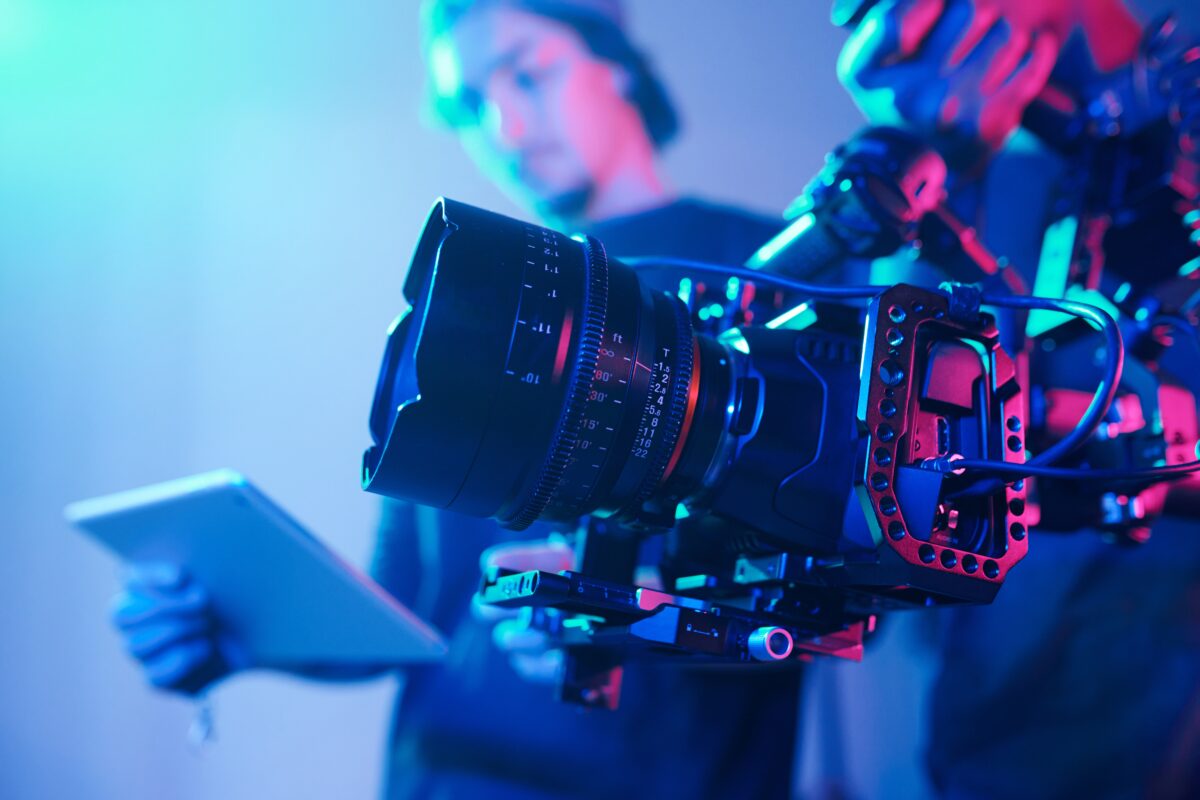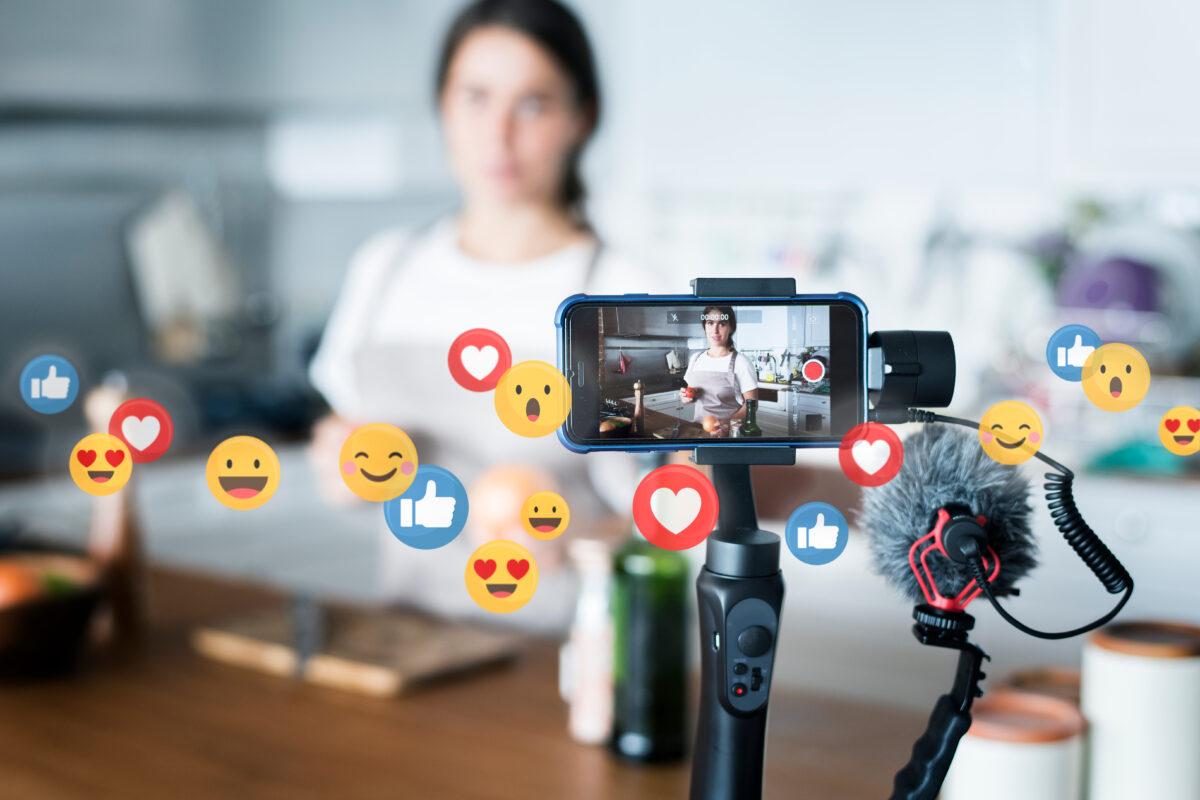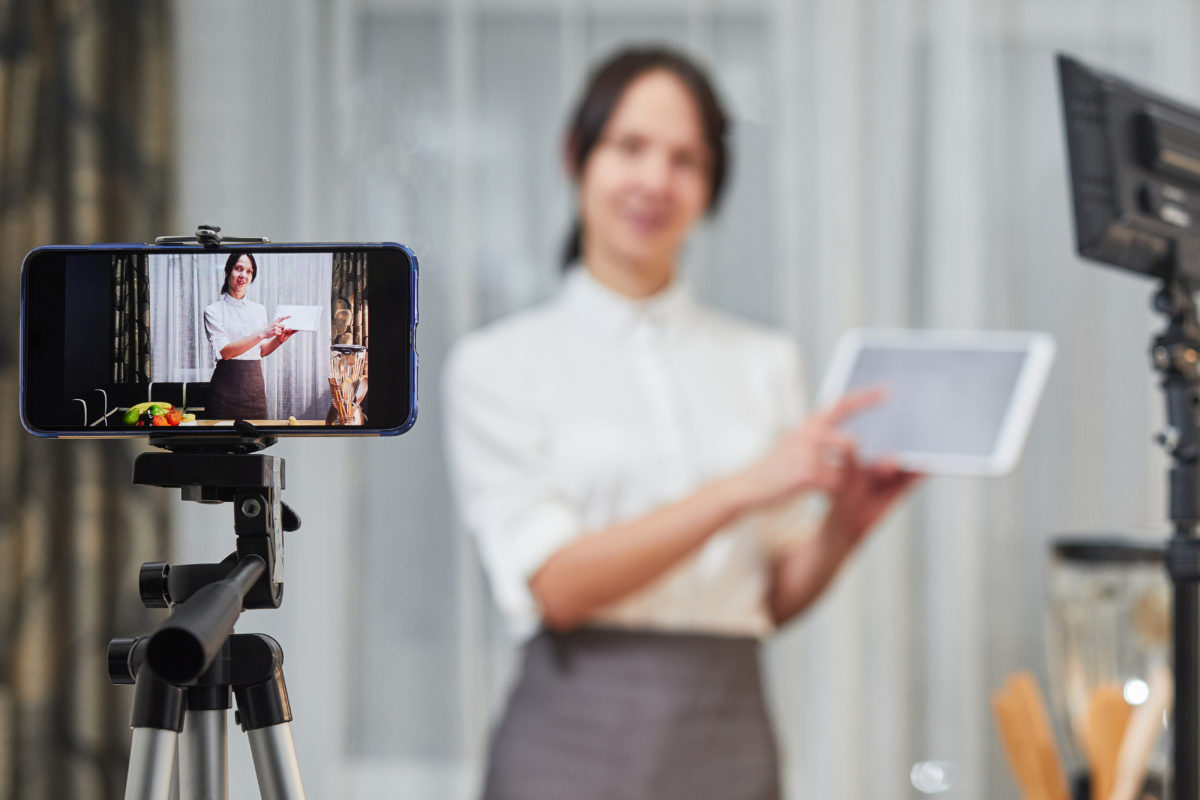
Understanding the Cost of Video Production for Commercials and Internal Marketing Videos
In today’s digital age, video content has become a cornerstone of effective marketing strategies for businesses of all sizes. Whether it’s a series of commercials aimed at capturing the audience’s attention or internal marketing videos designed to engage and inform employees, the impact of high-quality video production cannot be overstated. However, one of the first questions that arises when venturing into video marketing is: “What’s the cost?”
We’re going to delve into the factors that can affect video production costs, campaign planning, and overall marketing strategy.
Pre-Production Expenses
Concept Development and Scriptwriting
The first step in any video production is concept development and scriptwriting. This stage sets the foundation for your video and involves brainstorming sessions, scriptwriting, and storyboard creation. Depending on the complexity of the concept and the length of the video, costs can vary significantly.
Location Scouting and Permits
If your video requires shooting at external locations, scouting and securing these locations, along with necessary permits, can add to the cost. Some locations are free, while others may charge a fee. This is important to research and hammer out from the beginning, as a mistake at this stage can increase costs, time, and complexity.
Production Costs
Equipment and Crew
The quality of your video largely depends on the equipment used and the expertise of the crew. High-definition cameras, lighting, sound equipment, and drones for aerial shots can increase production value but also the cost. Additionally, hiring a professional crew including a director, cameraperson, sound technicians, and other specialists is a significant expense depending on your vision.
Talent Fees
If your video features actors, models, or presenters, their fees will contribute to the overall cost. The rates can vary widely based on the talent’s experience and the demands of the role, and it is best to select a variety of people to protect against an unexpected cancellation.
Location Costs
Shooting on location may involve rental fees, especially if you need to close a business for the day or require a specialized setting.
Post-Production Expenses
Editing
The post-production phase, which includes editing, is crucial for crafting the final product. This process can be time-consuming and requires skilled editors to ensure the video flows smoothly, aligns with the script, and includes any necessary effects or graphics.
Sound Design and Music Licensing
Background music, sound effects, and voice-over work are essential components that enhance the video’s impact. Licensing music and hiring voice-over artists add to the cost, but they are vital for a professional finish.
Graphics and Animations
Depending on the video’s style, adding graphics or animations can significantly enhance its appeal. These elements, however, require specialized skills and software, which may come at an added cost from the professionals you’ve hired to produce your video.
Miscellaneous Costs
Marketing and Distribution
Once your video is ready, it needs to reach your target audience. Costs associated with marketing and distribution channels should not be overlooked. Whether it’s for social media, television, or internal channels, each platform may involve different costs, ranging from free, to potentially hundreds or thousands of dollars depending on your desired campaign.
How Much Should You Budget?
The cost of producing a commercial or an internal marketing video can range widely, from a few hundred dollars for a simple in-house production designed for your business’s workforce, to thousands of dollars for high-end commercials produced by top agencies. Generally, businesses should consider their marketing objectives, target audience, and the message they wish to convey when budgeting for video production. A well-planned video can yield a significant return on investment, making it a worthwhile expenditure.
In conclusion, understanding the various elements that contribute to video production costs can help businesses plan effectively and make informed decisions. While quality video production is not cheap, it’s an invaluable tool in today’s visually driven market.
In search of the perfect video production crew to work with you on any and all campaigns? Visit our website or give us a call at 904-355-1766 today!

How Can a Hype Video Help You Sell Your Product or Service?
In the fast-paced and ever-evolving world of digital marketing, capturing the attention of your target audience is important while being increasingly challenging. One of the most effective tools you can use to break through the noise is a hype video.
But what exactly is a hype video, and how can it help in selling your product or service? Let’s dig in!
The Power of Hype Videos in Marketing
Hype videos are short, dynamic videos designed to generate excitement and anticipation for a product or service. They are more than just advertisements; they are a storytelling medium that combines interesting visuals, compelling narratives, and, often, an emotive soundtrack to create a buzz around the offer being presented.
1. Creating an Emotional Connection
As emotional beings, we often make purchasing decisions based on how a product or service makes us feel. A well-crafted hype video taps into these emotions, creating a connection between the brand and the audience. Whether through excitement, joy, inspiration, or even nostalgia, an effective hype video speaks directly to the hearts of its viewers.
2. Showcasing Your Product in Action
Hype videos provide the perfect platform to showcase your product or service in action. Unlike static images or text, a video can demonstrate the functionality, features, and benefits of what you’re offering in a dynamic and engaging way. This not only informs potential customers but also helps in building trust & authenticity.
3. Increasing Brand Visibility and Reach
In the age of social media, engaging, shareable content is king. Hype videos, with their high-energy and engaging content, are more likely to be shared across social platforms, thereby increasing your brand’s visibility, awareness, and organic reach. A viral hype video can put your product in front of millions of potential customers with minimal cost to yourself and your business.
4. Standing Out from the Competition
In a crowded market, differentiation is key. A creative and well-produced hype video can set your product or service apart from your competitors, allowing for an opportunity to highlight what makes your offering unique and why it’s the best choice for your customers.
5. Driving Action and Conversion
The ultimate goal of any marketing effort is to drive action – be it visits to your website, inquiries about your service, or direct sales. A compelling hype video not only raises awareness but also encourages viewers to take the next step. By including a clear call to action, your hype video can significantly increase conversion rates in ways that are interactive and not intrusive.
Conclusion
A hype video is a powerful tool in your marketing arsenal. It can create emotional connections, showcase your product, enhance brand visibility, differentiate you from competitors, and drive conversions. In a digital world where attention is the most valuable currency, a well-made hype video can be just what you need to elevate your product or service above the noise.
Remember, the key to a successful hype video is understanding your audience, crafting a compelling narrative, and maintaining high production quality. With these elements in place, your hype video can be an influential factor in boosting your sales and growing your brand.
Want to get HYPED? Give us a call at 904-355-1766 or contact us today!

Unlocking New Dimensions: The Power of 360-Degree Video Tours for Your Small Business
In this technology-forward, post-pandemic age, businesses are constantly seeking innovative ways to connect with their customers near and far. For small businesses, the adoption of technology is not just a trend; it’s a strategic move to stay competitive and relevant. One such technological marvel that’s gaining traction is the 360-degree video tour. But what exactly is a 360-degree video tour, and why should your small business consider integrating it into your marketing strategy? Let’s dive in!
What is a 360-Degree Video Tour?
A 360-degree video tour is a virtual experience that allows viewers to explore a physical space as if they were actually there. Often created using a combination of panoramic photography and video, these tours create an immersive environment where viewers can inspect the space in every direction. This enables businesses to showcase their premises, products, and services in a comprehensive and interactive manner.
How Does It Work?
To create a 360-degree video tour, a series of panoramic images or videos are stitched together. This process creates a spherical representation of the space. When viewers watch the tour on a compatible device, they can control their perspective by moving their device or dragging their mouse, giving them the feeling of being at the center of the scene.
Why It’s Important for Your Small Business:
- Enhanced Customer Engagement:
- Immersive Experience: Unlike traditional videos, 360-degree tours engage customers by providing a realistic and immersive experience.
- Interactive Element: Viewers are not just passive observers; they interact with the content, leading to even higher engagement.
- Competitive Edge:
- Stand Out: In a crowded market, offering a 360-degree tour can differentiate your business from competitors.
- Technological Savvy: 360-degree tours show that your business is forward-thinking and unafraid of new and emerging technologies.
- Increased Accessibility:
- Remote Access: Customers can explore your space from anywhere in the world, breaking down geographical barriers.
- Convenience: It’s accessible 24/7, allowing customers to visit your virtual space whenever they’d like.
- Boosts Marketing Efforts:
- Shareable Content: 360-degree tours are unique and shareable, enhancing your digital marketing strategy by allowing for an experience unlike others in your industry.
- Social Media Integration: These tours can be integrated into your social media presence, increasing your online presence & overall brand awareness.
- Builds Trust and Transparency:
- Realistic View: Showcases your business’s space and builds trust among potential customers.
- Transparency: 360-degree tours provide an honest look at what customers can expect if they choose to visit your business, reducing overall uncertainty.
- Cost-Effective:
- Long-Term Asset: Once created, the tour can be used repeatedly without additional costs and can be recreated just as easily should locations change.
- Reduces Physical Visits: It can cut down on the time and resources spent on in-person tours.
- Overhead Opportunities: These tours can even help to reduce the amount of employees needed on any given shift.
- Analytics and Insights:
- Viewer Data: You can gather valuable data on viewer interactions and preferences, helping to tailor future business strategies.
The integration of a 360-degree video tour into your marketing strategy is more than technological advancement; it’s a gateway to creating deeper connections with your audience within their own homes. It provides a unique and engaging way to showcase your small business, elevating customer experience while providing a unique, competitive edge. As technology continues to evolve, staying ahead of the curve is crucial, and a 360-degree video tour is a step in that direction.
Ready to revolutionize your customer engagement with a 360-degree video tour and more? Contact us to explore how this innovative tool can transform your small business today!

The Top 5 Best Video Production Practices for Social Media
Creating great content for social media can be a challenge, but it doesn’t have to be. With the right tools and techniques, you can create engaging videos that resonate with viewers and help your business stand out from the crowd.
In this blog post, we will discuss five key tips for successful video production on social media platforms. And by following these best practices, you can ensure that your videos are up to industry standards — as well as your audience’s expectations. So let’s get started!
#1 — Proper Timing
In today’s world of technology, it is important for video production teams to be mindful of time lengths when creating social media content. Limited attention spans mean that viewers are less likely to stay engaged with content that runs too long.
Recent studies have found that shorter videos tend to perform better on social media platforms, with the ideal length varying from platform to platform. For example, YouTube videos typically perform best with videos that are around two minutes long, according to Hootsuite, while Instagram reels can be as short as 15 seconds and perform well so long as they fall under one minute.
#2 — Aspect Ratios and Platforms
When it comes to aspect ratios, video production teams or content creators should also be aware of the differences between vertical and horizontal formats.
Specifically, vertical videos are best suited for social platforms such as Reels and TikTok, which feature content specifically designed for mobile devices. Horizontal videos are better suited for more traditional platforms such as YouTube and Facebook, which feature content optimized for computers and other larger screens.
#3 — Appropriate Lighting
Lighting is an essential part of any video production. When shooting on location, it is important to ensure that your subject is well-lit and not backlit, otherwise their features — and the quality of your focus — will be obscured in shadows.
A good way to prevent this is by using a ring light, which produces soft and even lighting that helps bring out the details of your subject’s face. Additionally, you should try to keep your lighting setup consistent throughout the entire production.
#4 — Sound Recording
Sound is an integral part of any video production and it should be considered just as carefully as lighting and aspect ratios. Quality sound design can make even the simplest video come alive, while poor sound can make even the best video seem amateurish and unprofessional.
Remember: When recording audio for a project, it is important to use a high-quality microphone that is able to capture a wide range of frequencies. Additionally, it is also important to ensure that your audio levels are balanced correctly and not too loud or too quiet.
#5 — Filters and Edits
The use of filters and color/lighting correction can be important tools in video production for social media. Filters can be used to enhance the look and feel of a video, creating a more engaging experience for viewers. Additionally, color correction is crucial for ensuring that colors look consistent across all devices, creating a more professional appearance.
“There are a lot of tools within apps like Instagram to edit videos, but also I’ve come to realize Google Photos has some really great editing tools,” recommends Tamara Dileo, the Director of Production with Mad Men Marketing. “But it’s also important not to overdo it with the filters unless it’s a deliberate style choice.”
Honorable Mention — The Right Music
When it comes to picking the right music for a Reel or TikTok, it’s important to match the tone of the video. Music can be used to evoke emotion and create a mood that resonates with viewers. Depending on the type of content, different styles of music may be more effective in creating the desired atmosphere.
For example, upbeat music may be more suitable for an inspirational video, while a slower piece is better suited for a reflective moment. Music can also be used to add energy and dynamism to a clip, or even just provide background ambience.
Overall, by following these best practices, video production teams — or individual content creators — can achieve greater success while developing content for social media platforms.
Then again, if all of this feels just a tad overwhelming, it’s important to know that you don’t have to go it alone.
After all, here at Mad Men Marketing, we are rooted in the belief that brands should interact with their customers, not interrupt them. Thus, our in-house production team is equipped with the right tools, technology, and expertise to help you take your visual media to the next level!
So, are you ready to interact? If so, contact Mad Men Marketing today by calling (904) 355-1766!

4 Tips for Shooting Video of Yourself on Your Phone
- Setting
-
- Choose a space that is well-lit with as little background noise as possible.
- Avoid spaces where you will be back-lit, such as sitting in front of a window or a lamp, as this could cause you to be silhouetted and difficult to see. Position yourself to keep your main light source in front of you.
- Also, avoid spaces where there would be distracting clutter in the shot.
- Framing your shot
-
- Position the camera at your eye level to avoid shooting yourself at high or low angles, and keep yourself centered in the frame.
- Use a tripod to keep your camera steady. Some selfie sticks come with a built-in tripod. If you don’t have this equipment available, then propping up the phone on a flat surface can work.
- Front or back-facing camera
The back-facing camera on your phone will provide higher quality video due to a better lens and higher megapixels. But if you prefer to be able to see yourself as you shoot, then you can use the front-facing camera.
KEEP IN MIND: As you’re shooting, keep eye contact with the lens as if it’s the person you’re talking to.
- Hitting the record button
-
- Give yourself a couple of seconds after you hit the record button to start talking. This will give the final video editor room to splice in your video and transition between others.
- Be sure to smile before you start talking and after you finish.
- Speak clearly and avoid muttering or trailing off as you talk.
- Some more helpful tips
-
- Keep water on hand (but make sure you can’t see it in the shot) for when your mouth or throat get dry.
- Avoid wearing jewelry that can make noise, like bangled bracelets.
- Don’t be too hard on yourself. Most people get nervous being on camera and it can take multiple tries to get it right!


